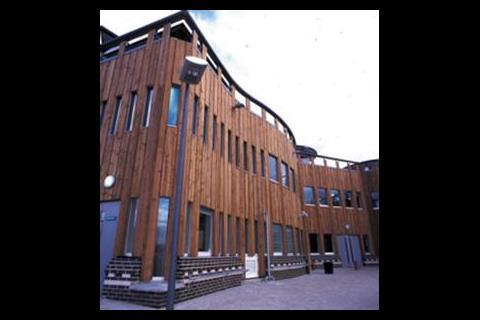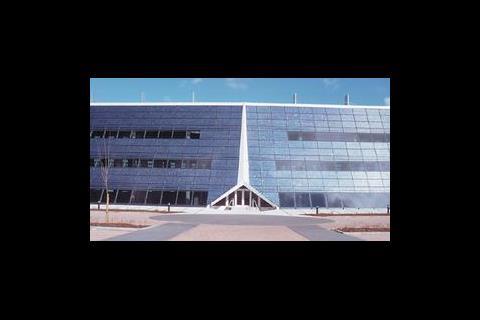Case studies are considered one of the most effective ways to demonstrate best practice as well as describing a project's development and providing information on technical details and the construction process. Case studies can also show predicted and realised performance data – including staff satisfaction.
However, it's not always practical to carry out case studies because of the time and cost involved. Certainly not in the numbers which would be required for useful research. Building owners may also be concerned about any negative reporting about their building's performance.
Traditionally, designers and clients have only had limited sources of case study material, tending to look to professional and trade journals, DETR funded initiatives such as the Energy Efficiency Best Practice Programme managed by BRECSU, and PROBE1; or publications such as BSRIA's Environmental Code of Practice case study collection2.
The BRE is therefore proposing an alternative but complementary approach. The web-based collection of 'edited' case study data is being set-up that will be accessible on-line. By carefully selecting key facts required about a sustainable building, ie limiting these to items of an interesting or innovative nature, it should be possible for a case study entry for a project to be created within 30 minutes. A collection of several hundred buildings can be built-up relatively quickly.
A web-based reference file offers several advantages over a paper-based resource. Entries can be located by key word searches, allowing rapid updating as new information becomes available, and the Internet gives access to a wider audience at low cost compared to producing large reference books.
Creating a reference file
A typical case study entry will consist of a single side of A4, readable on or downloadable from the Reference File website. This will give details of the basic project concept, including design team and client contacts, and outline any sustainable features. Table 1 gives the structure of the Reference File in terms of the case study section headlines, with a few examples of features that might be applicable to each. Features worthy of note could be novel products, innovative techniques, or simply a willingness to improve upon regulatory requirements. The term 'sustainable' has been taken in its broadest sense to include the energy, environmental, social and economic aspects of a scheme. Entries can be made via the website, or on a form.
Overcoming potential pitfalls
There are a number of potential problems in developing such a site. As BRE will be receiving data on buildings for which it has limited means of validation a number of safeguards will be put in place. For example, any performance data will need to be labelled as predicted, estimated or measured, and the name of the person submitting the data entry will be published on the site. BRE will reserve the right to check-up on any extravagant claims.
But the key purpose of the site is to let people know that something has been tried. Users can follow up detailed sources of information listed on the Reference File, or make contact with the client or design team.
Terminology has been selected and classified with the support of an industry advisory team3. However these issues are always open to debate. Particular concerns have been:
- the expression of previously unquantified parameters, eg what constitutes 'local' in the context of aggregate sourcing
- ensuring clarity of terminology (an on-line thesaurus will be provided)
- a sensible ordering of parameters given the interplay between features.
Another potential problem area is that the need for data entry to be quick and simple conflicts with the gathering of detailed project information. BRE has for example deliberately minimised reference to more standard system options as it was felt that these details would not be required on an initial viewing of a case study. BRE has also limited the amount of quantitative data required, to encourage people to at least register the existence of their project.
But there are so many aspects of sustainability which are innovative and which engineers want to research, that the website allows for data to be provided on all sustainable points of interest. However, the Reference File stresses that a building can be included for its value in a few selected areas.
As completed forms are examined in the early stages of the project, BRE will make changes to the format for greater ease of use and effectiveness.
The benefits of Reference File use
The Reference File will contain details of all types of building, both domestic and non-domestic, public and private sector, new build and refurbishment. It will also cover a wide range of sustainability issues. This packaging of data will provide an instantly available system for finding out where innovation is taking place through the key word search and enable designers to showcase projects to clients and fellow professionals at no cost to themselves.
Getting involved
The BRE will shortly be inviting designers to submit details of their projects to be considered for inclusion. As previously stated it will not be necessary to satisfy every category, although it will be normal for a commitment to sustainability to show itself through achievement in a number of them.
As the project progresses it will become possible to enter project details directly onto the Reference File website. However initially paper based data entry forms will be distributed to architectural and engineering practices throughout the country in March and April.
These will be accompanied by further project information. However in the meanwhile if you want to know more contact the BRE Project Manager, Denice Jaunzens on 01923 664522, e-mail jaunzensd@bre.co.uk.
Source
Building Sustainable Design
Reference
References
1 'Post Occupancy Review of Building Engineering', Building Services Journal, July 1995.
2 BSRIA's Environmental Code of Practice For Buildings and Their Services: Case Studies, BSRIA CS16/99.
3 Members of the industry support group are: Nigel Howard, Martin Liddament of Veetech Ltd, Chris Cooper of Cooper Research, and Neli Cutland of National Energy Services Ltd.





















